This tactical analysis will provide an analysis of recently scored goals originating in the wide areas.
The focus of the analysis will be goals that occur as a consequence of a winger cutting inside to either cross or shoot — or from a player making a “corner run”.
This weekend’s round of Premier League matches witnessed seven goals like this, proving how effective such actions can be.
This tactical theory will pay particular attention to corner runs and will provide practice ideas coaches can use to implement these tactics.
Corner Runs
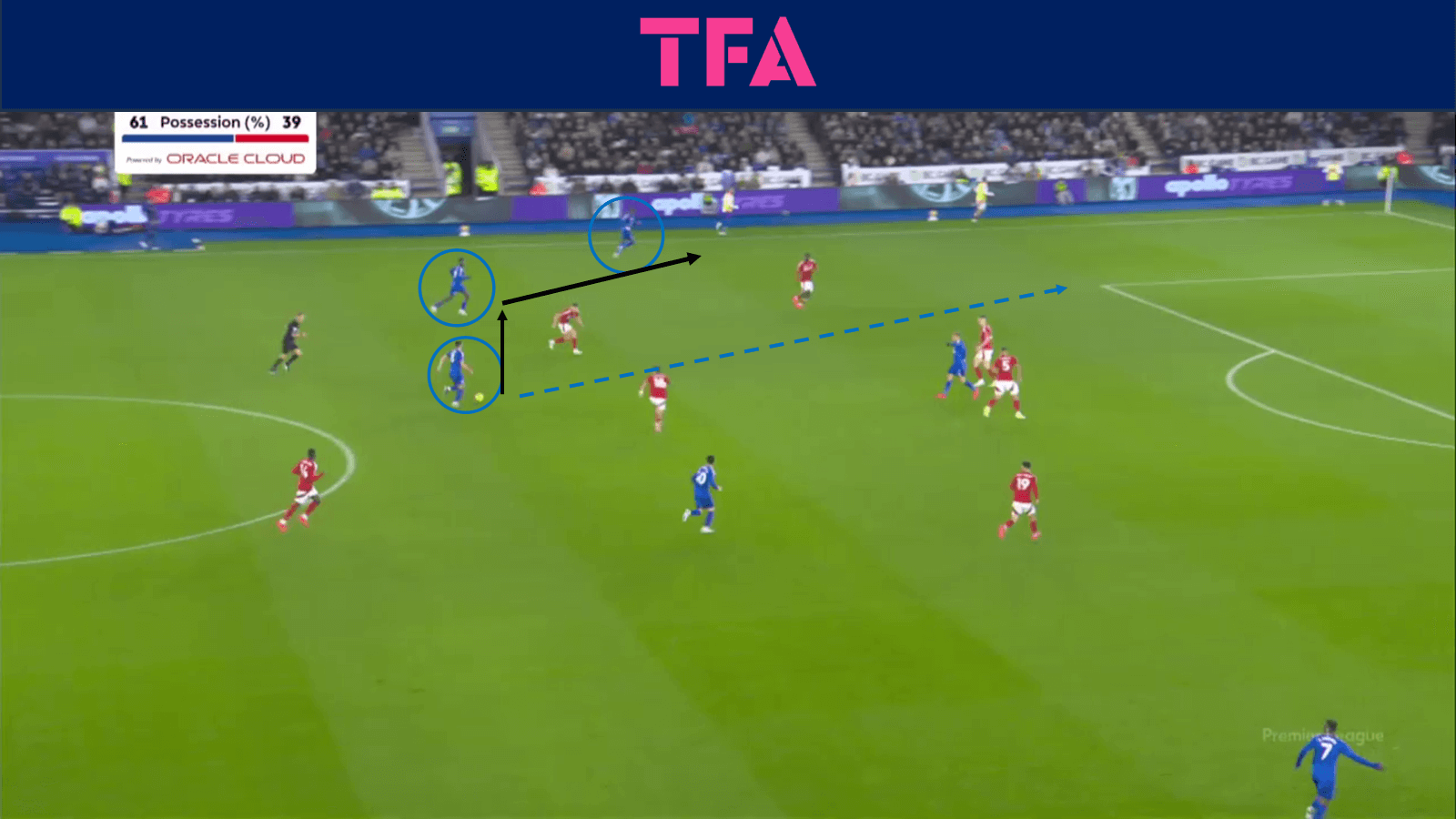
The above image shows the build-up to Leicester’s goal in their defeat to Nottingham Forest, which came as the result of a Harry Winks‘ (#8) corner run.
In this scenario, Winks received the ball in the centre of the pitch and drove forward before passing it to his central midfield partner, who then played the ball out wide.
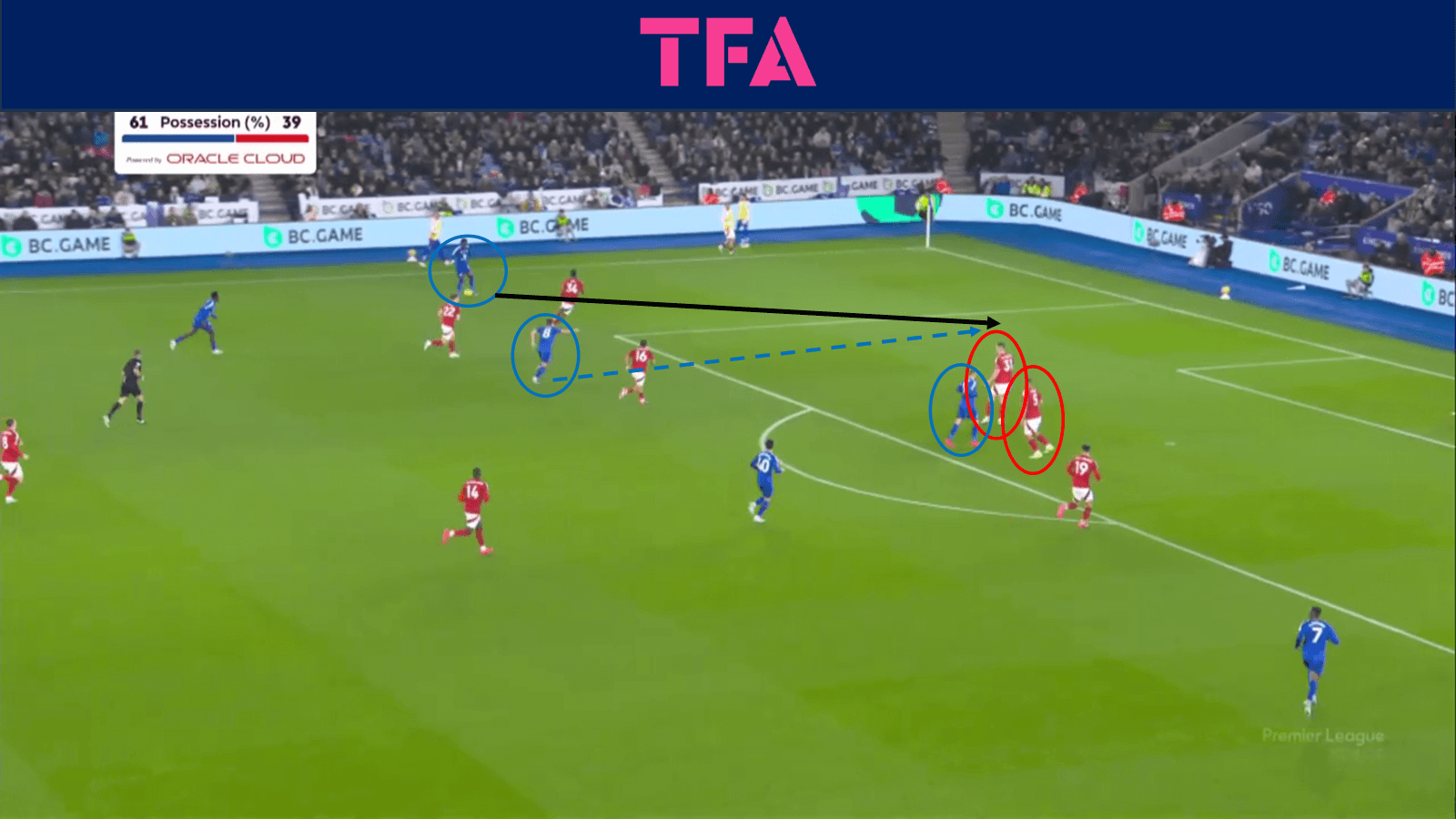
The winger’s reception of the ball triggered the former Tottenham star to continue his forward motion and make a sprinting run between the opposing centre-back and right-back.
Jamie Vardy (circled just inside the box) positions himself right between the centre-backs.
The ball-near centre-back, while also prioritising remaining between the posts, cannot track the run.
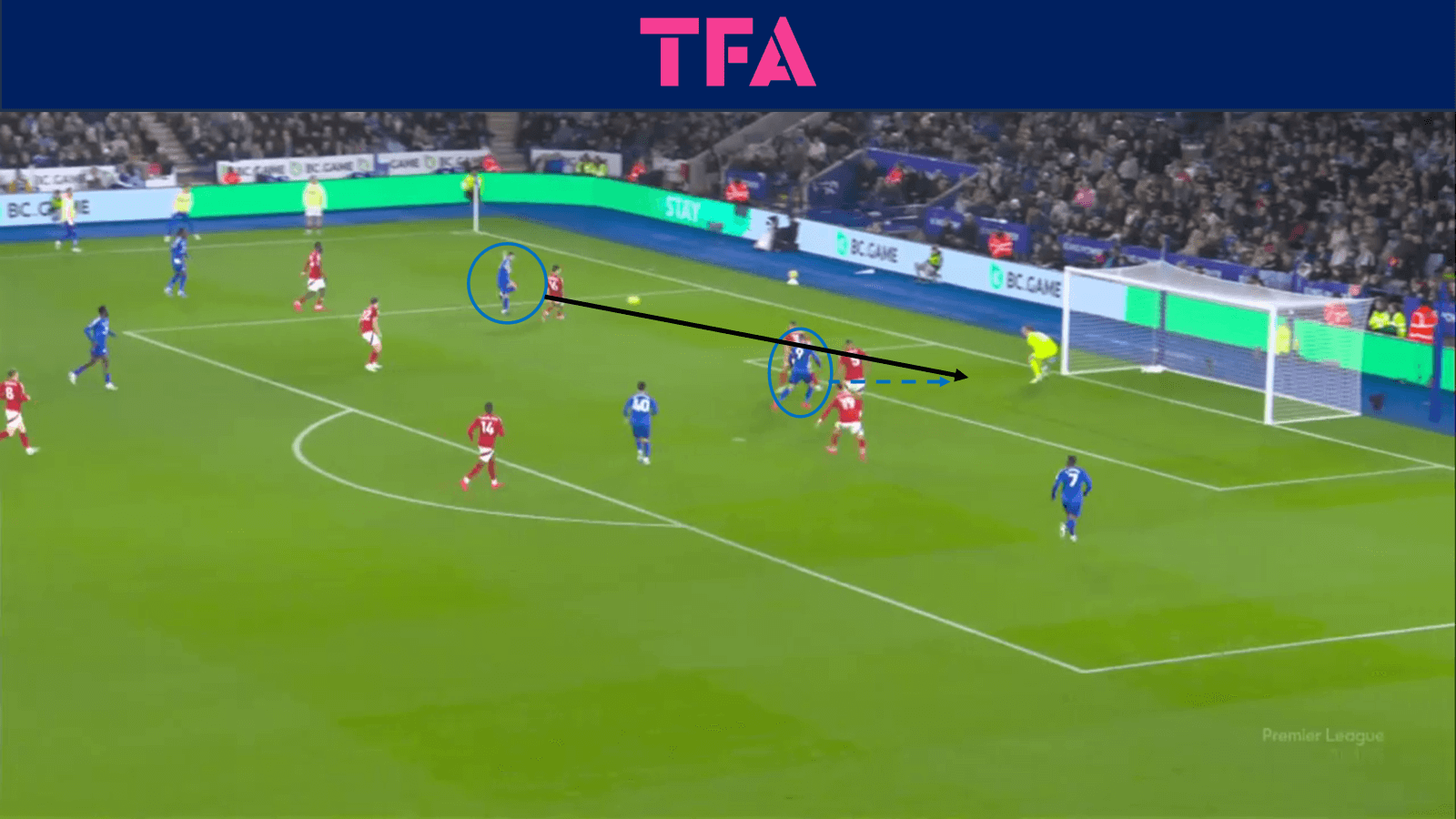
The winger took a touch before playing a diagonal pass towards the box and into the path of his midfielder.
Winks let the ball roll across him before whipping it first-time across the face of the goal.
Vardy ran between the centre-backs to poke the ball home.
The effectiveness of this movement is in its simplicity.
By timing the run correctly and increasing the speed to a sprint as the winger receives, the run is very hard for midfielders to track.
Centre-backs do not want to become stretched and/or leave strikers open in the box, so they are reluctant to cover this space.
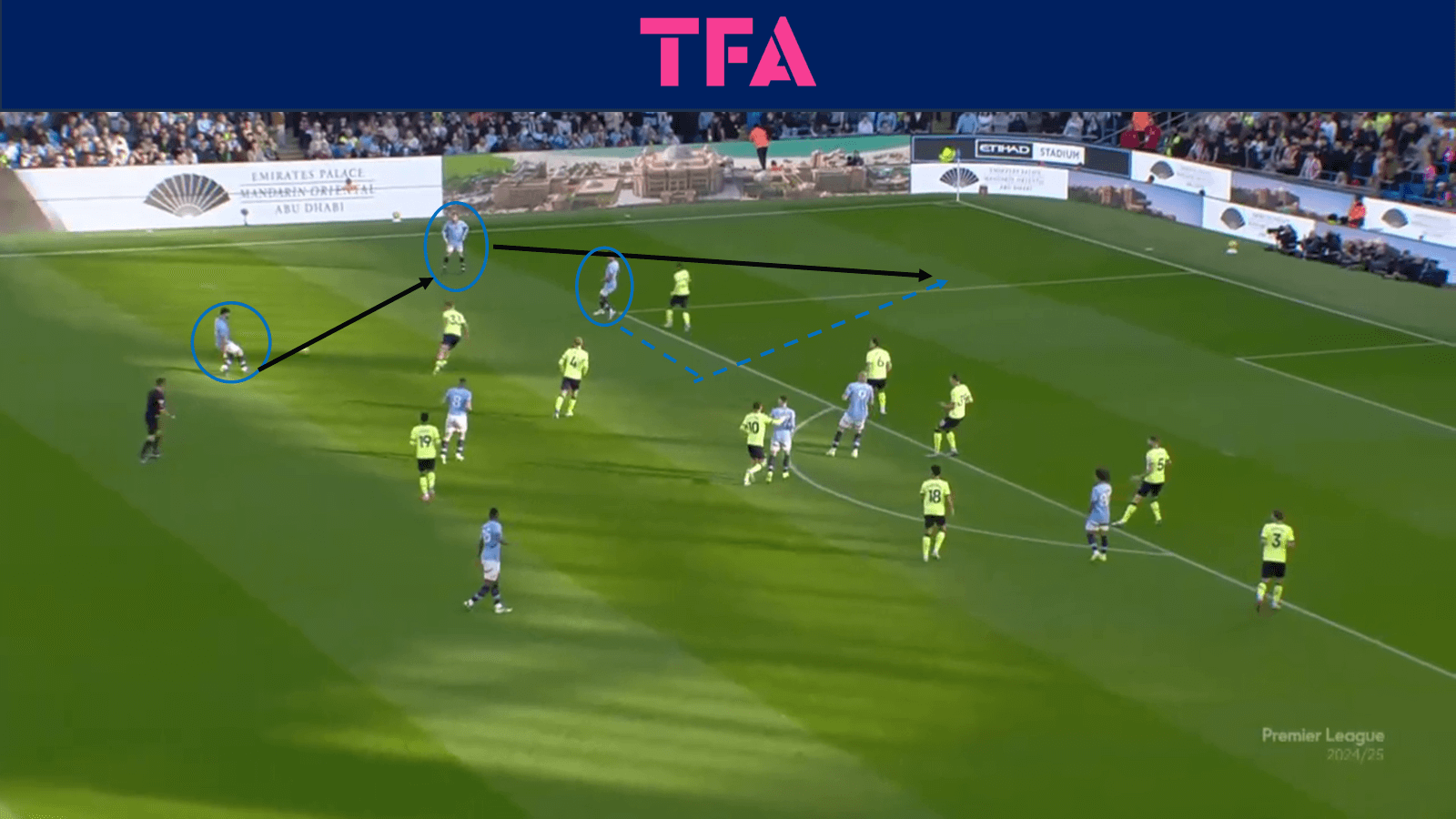
Manchester City scored their winning goal against Southampton from the same movement.
The major difference in this example, which came from a sustained positional attack, is the player making the corner run (Matheus Nunes) did so from a static position at the edge of the opposition’s box.
As the ball was travelling wide, Nunes backtracked to be on the blindside of the opposition’s widest defender.
When his teammate took his first touch, as with the Leicester example, this was Nunes’s trigger to run behind.
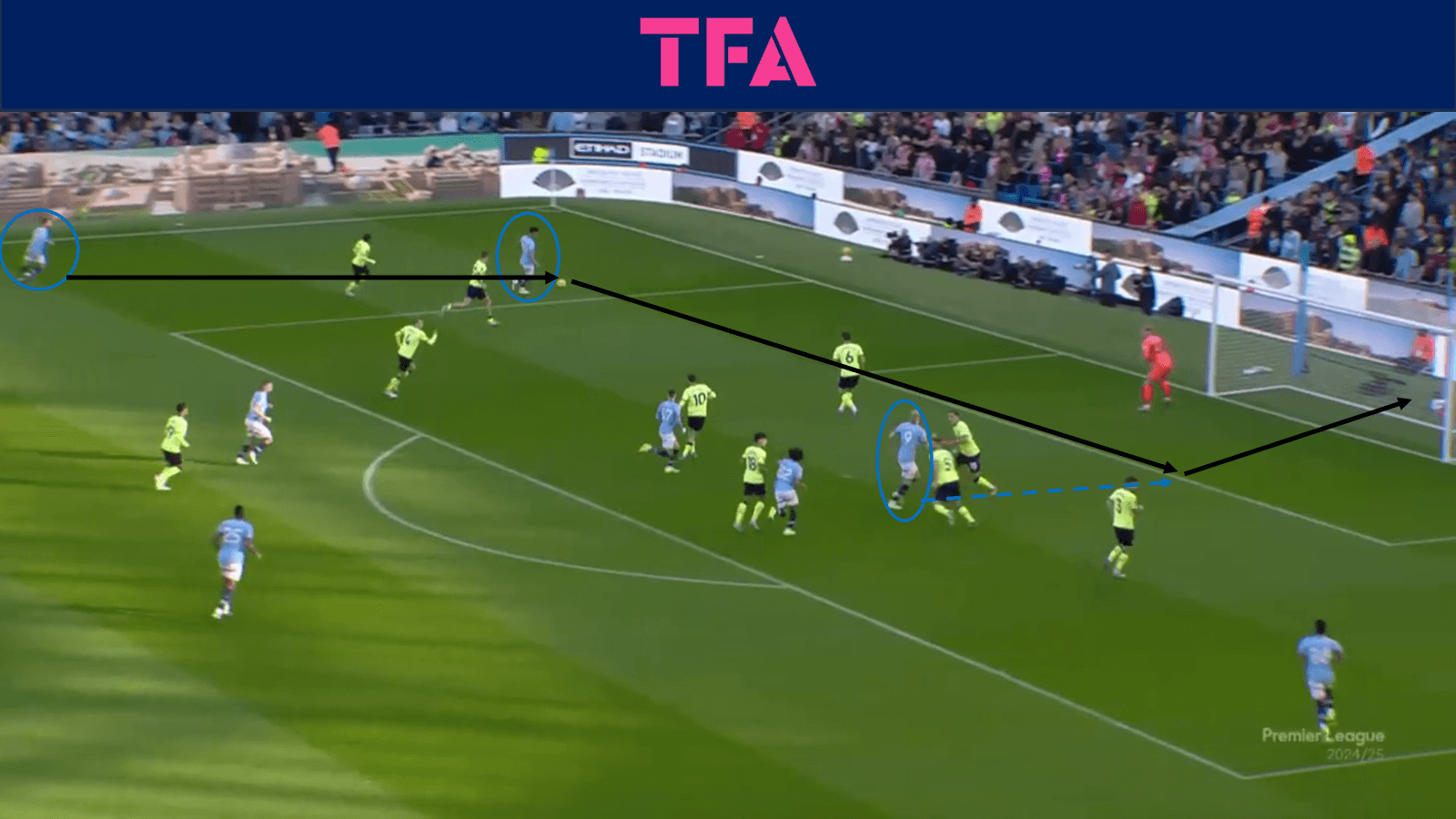
Nunes, again, let the ball roll across him before delivering a first-time cross.
Erling Haaland managed to escape the close attention of two entre-backs and battle his way to get on the end of the cross.
Corner Run As A Decoy
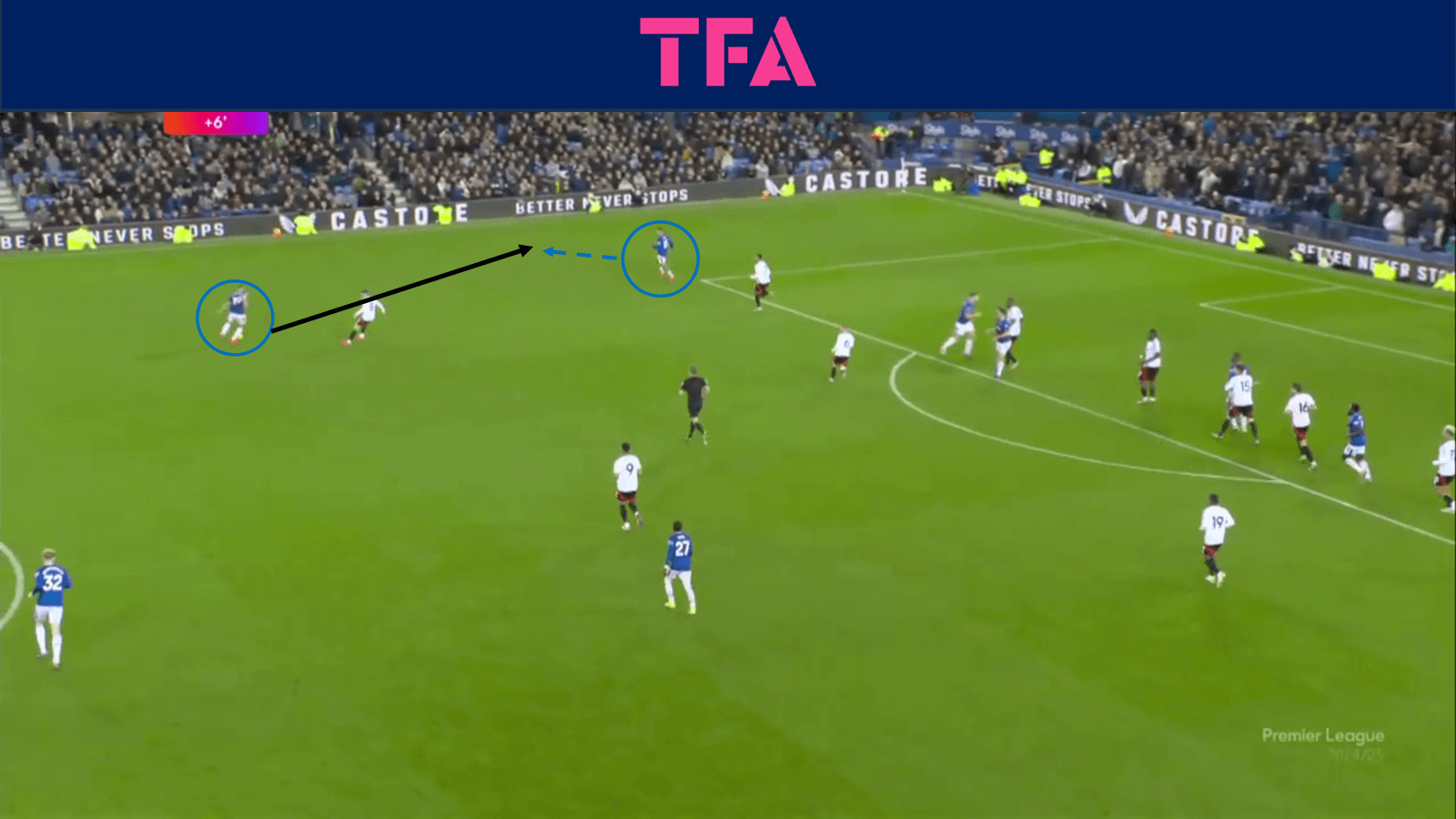
This is another example of a corner run resulting in a goal from Everton’s draw with Fulham.
The movements performed by Everton have all the same traits as the previous examples, except this time, the run is being used as a decoy for a wide player to cut inside.
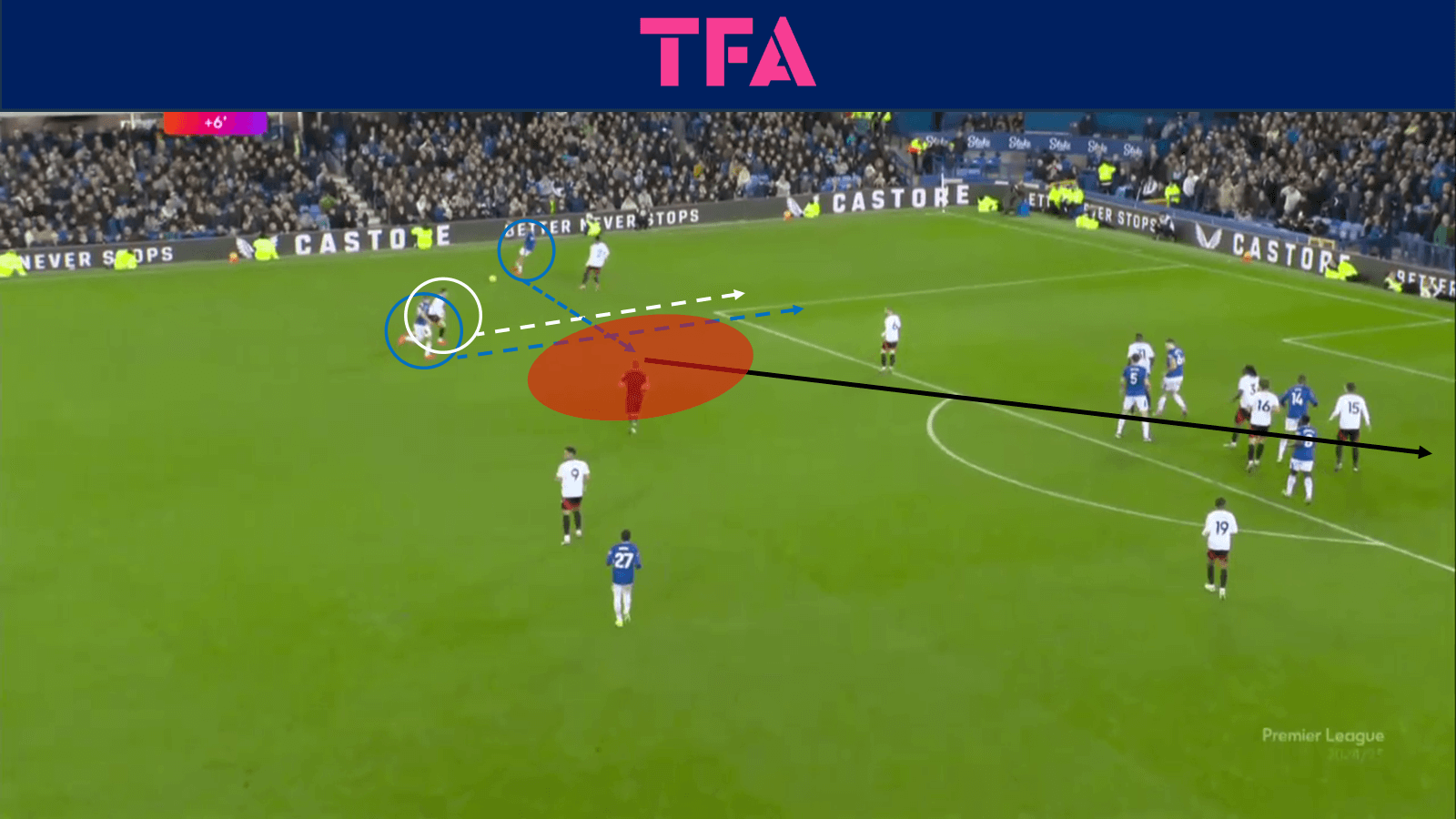
In this example, left-back Vitaliy Mykolenko received the ball from a switch of play and passed it out wide.
After that, Mykolenko immediately ran towards the side of the box, increasing his speed as his teammate controlled the ball.
The defending Fulham player (circled) tracked the run well and remained almost touch-tight to Mykolenko.
This meant that Mykolenko could not receive the ball but had the knock-on effect of clearing the half-space area at the edge of the box.
This allowed the winger to drop his shoulder one way to wrong-foot the defending player before cutting the opposite way and delivering a cross to the back post.
The cross was put back across goal by Ashley Young before being headed home by Beto.
Overlap
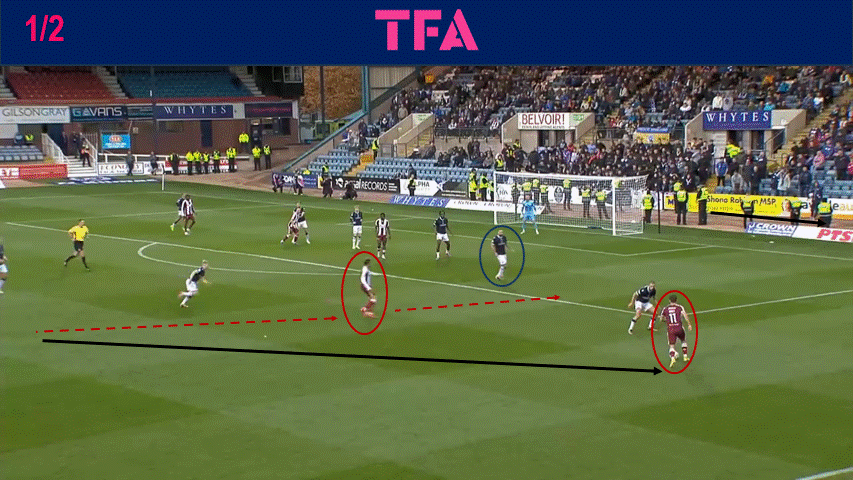
The above image, this time from the Scottish Premiership, shows St Johnstone scoring from their winger cutting inside.
The space for the shot was created from an initial corner run that turned into an overlap.
As the St Johnstone winger received the ball, after a deflection from the central area, his central midfielder began to sprint between the side centre-back (of a back three) and wing-back.
This movement brought the opposition’s widest centre-back further outside the width of the goal to defend the movement.
Due to his winger already taking an inside-the-pitch touch and the defender shifting to cover the space, the midfielder adjusted his run and provided an overlap instead.
The overlap had a much more significant impact on the covering centre-back than the pressing player, with the centre-back having to move three or four yards to his left to defend the overlap.
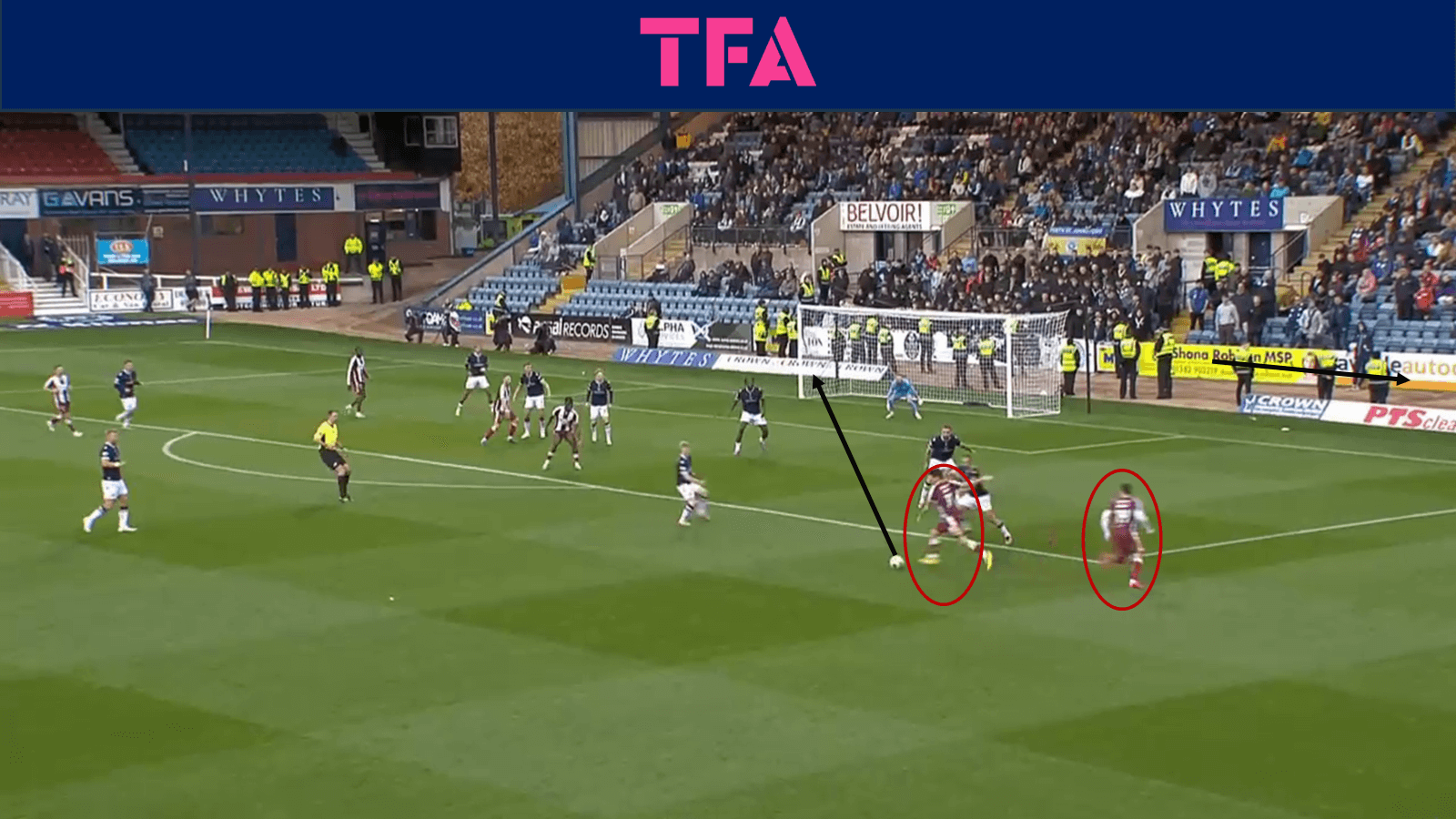
By shifting to cover the run, the winger saw a big enough gap to see 75% of the goal and encouraged his decision to shoot.
The St. Johnstone winger used this sight of goal to curl a shot towards the far bottom corner.
Corner Run & Overlap
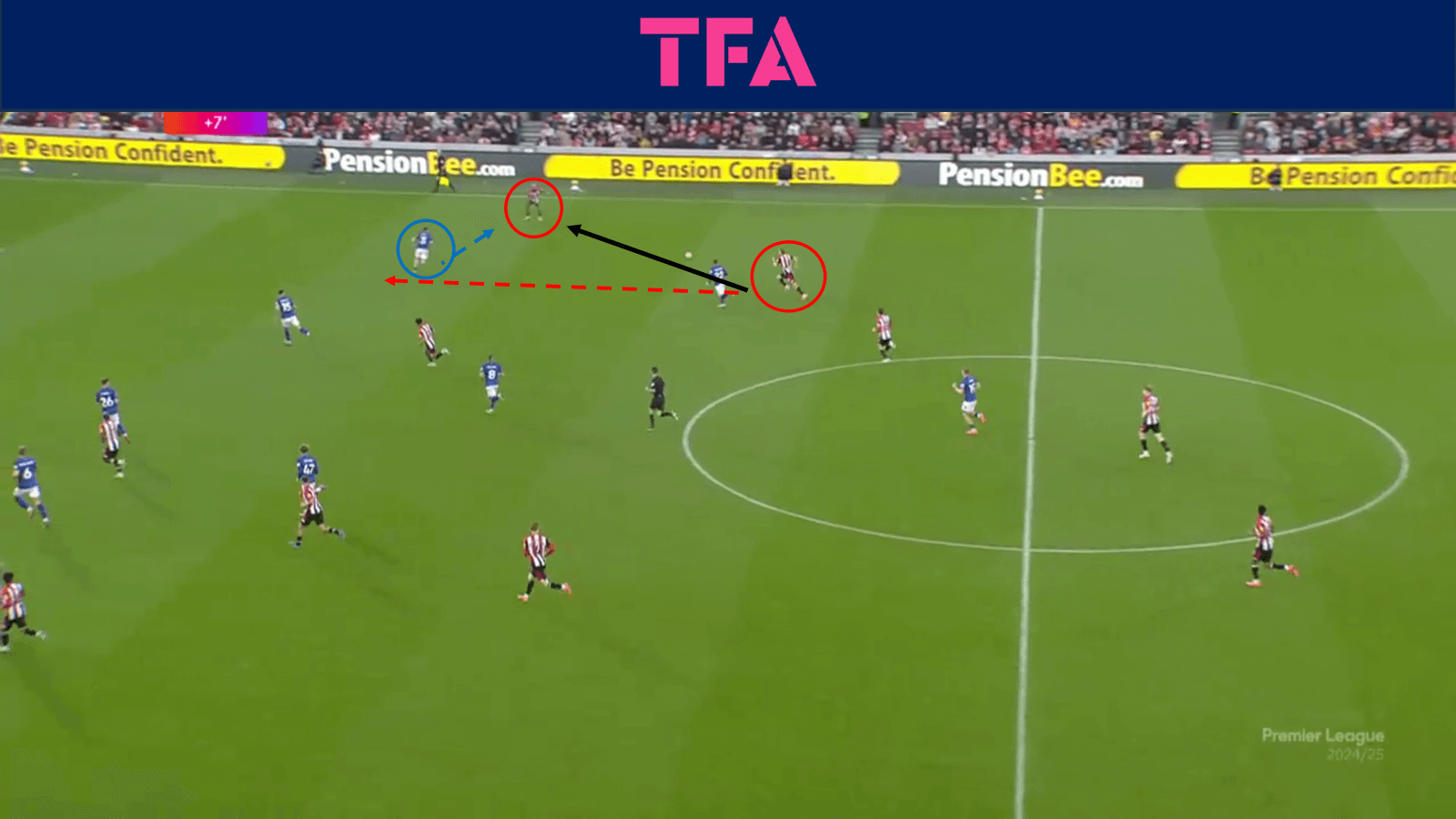
This counterattack goal from Brentford’s Premier League win over Ipswich this past weekend provides, in a single play, examples of the importance of both corner runs and overlaps.
Right-back Mads Roerslev plays forward from the Brentford midfield into the wide area for his winger, Bryan Mbeumo, to receive side-on and face the pitch.
After playing the pass, Roerslev continues his forward momentum and begins a corner run from a deep area in between Ipswich’s two widest-defending players.
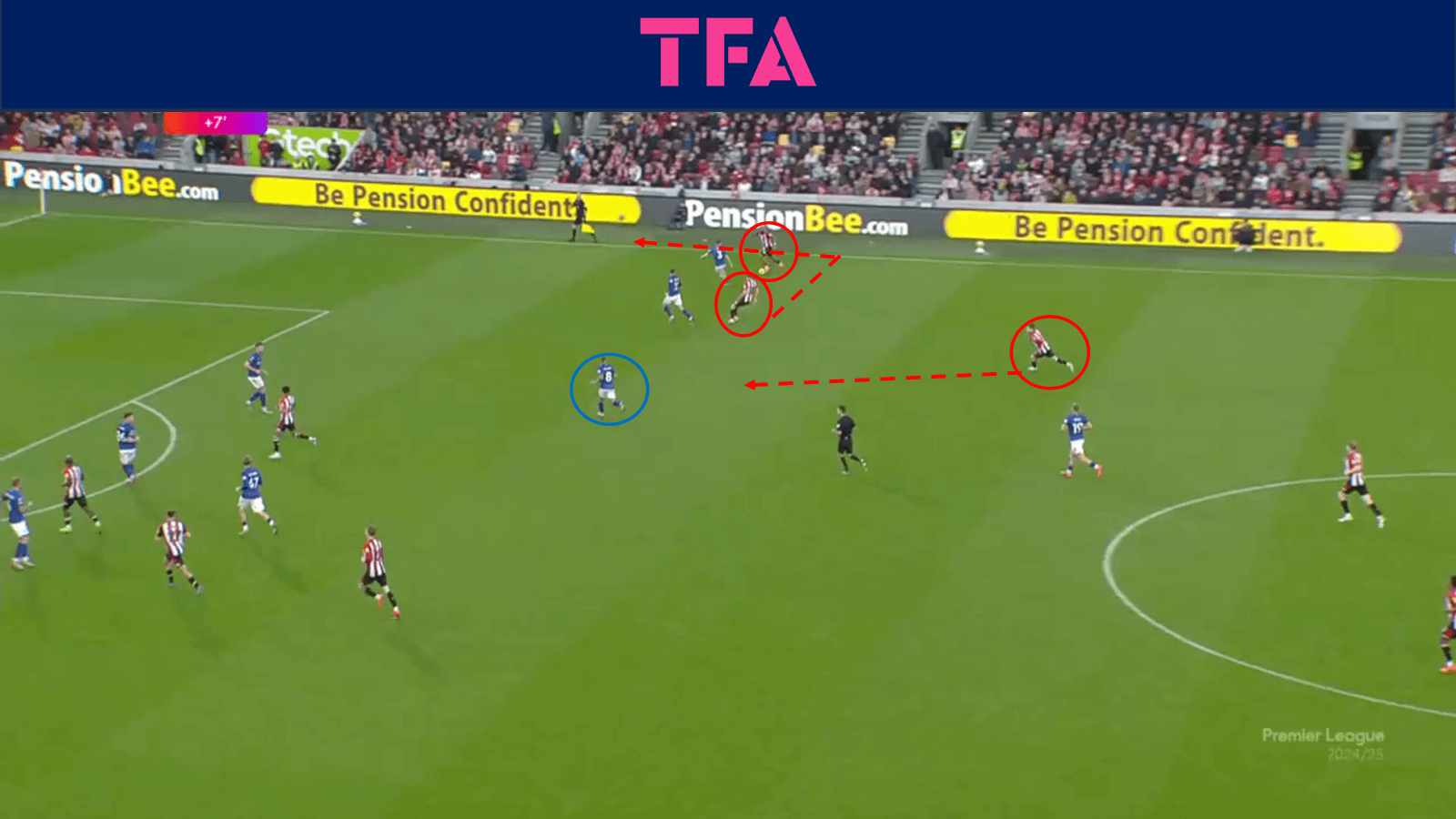
With his run being well-tracked and Ipswich’s #8 Kalvin Phillips in an excellent position to defend the area Roerslev was trying to clear, the Dane adjusts his run.
Instead of continuing in a straight line, Roerslev makes an overlapping run around his winger.
This is the trigger for a second, selfless corner run from a deeper Brentford player.
Phillips tracks this run.
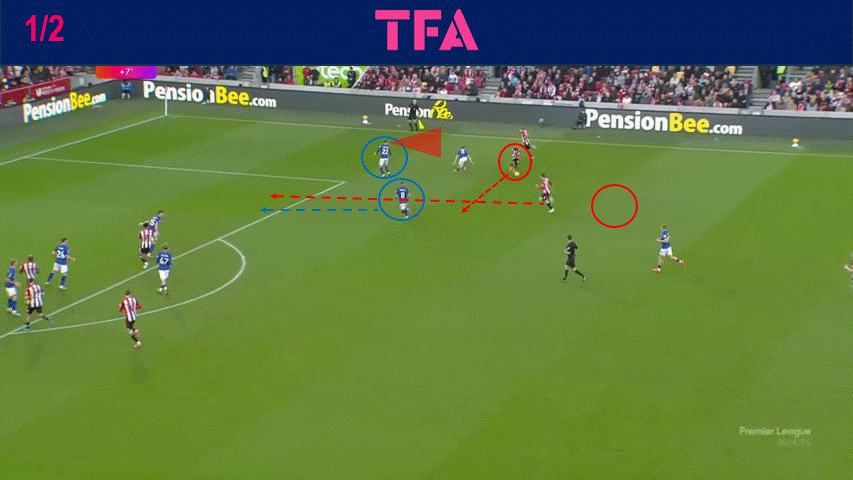
One defending Ipswich defender drops behind his teammate closest to the ball to defend against the overlapping run.
The other, Phillips, is dragged towards his own goal, and that same half-space area at the edge of the box highlighted before opens up.
The winger cuts inside and delivers a cross/shot to the back-post, which ends up in the back of the net.
Developing Wingers: Implementing The Overlap
The following two practices are designed to work on a winger’s individual skills when supported by overlaps and corner runs.
The exercises can be used as introductory activities for sessions working on overlaps and corner runs or in individual or small group training.
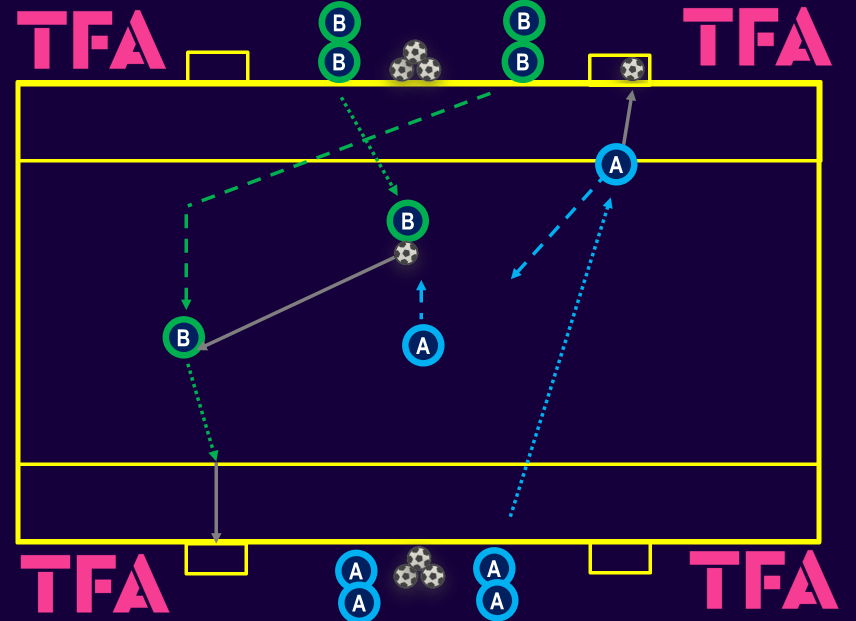
This two against two waves of attack game is designed to promote the conditions for overlaps to occur.
The game begins with one team attacking either goal freely (shown in blue in the image).
Once the shot has been taken, the opposition (green) begins to attack either of the two goals on the opposite side.
To score, the attacking team must work the ball into the end zone before shooting.
The attacking team should be instructed to leave one covering player central whilst their teammate attacks a goal.
When a shot is taken, the now-attacking team should attack with pace to create a two-on-one and not allow the shooting player time to recover.
Coaches should encourage the initial in-possession player to take their first touch diagonally inside the pitch.
This diagonal touch should act as a trigger for their teammate to overlap.
Once the overlapping movement is being made, the dribbling player should run at the defender to pin them in place.
This should allow the space for their overlapping teammate to receive.
If the defending player elects to cover the run, the player with the ball should be encouraged to attack the space vacated by themselves.
Wide Area One On Ones
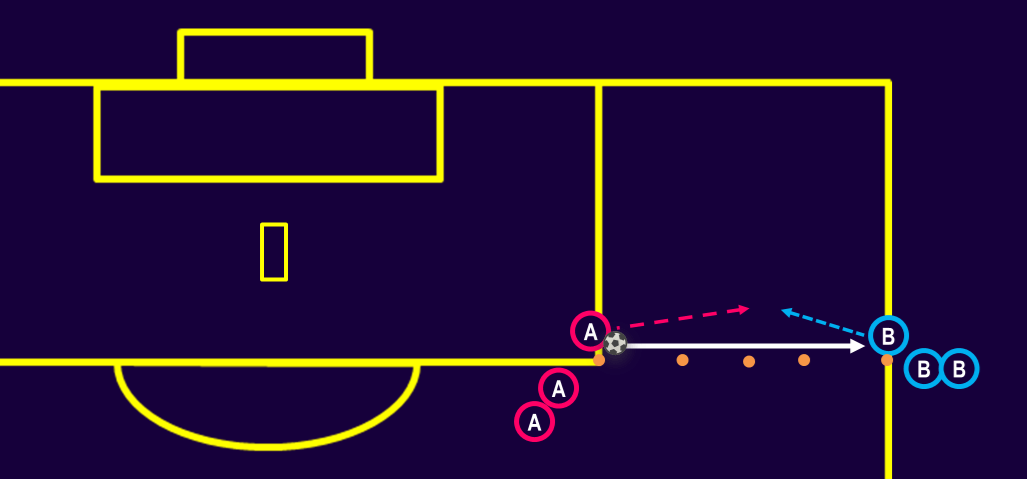
This simple attacking drill is designed to improve wide players’ ability in taking players on one-on-one.
It can be used as a stand-alone exercise or built upon by adding additional layers of complexity and options for the player receiving the ball.
The exercise begins with a pass being played from just inside the corner of the box to an attacking wide player who is parallel to the ball and on the touchline.
After playing the pass firmly into the attacker’s feet, the passer becomes a defender and charges at the receiving player.
This pass represents the wide player receiving from a switch of play and the previously tucked-in full-back rushing out to press the ball.
An adaptation for this pass could be for the ball to be played by a different, inactive player or coach.
The receiving player must take the defender on one-on-one and have two ways of scoring a point.
The first way is to take the defender on, down the outside, and deliver a cutback.
If the cutback reaches the small mini-goal, the attacker receives a point
The mini-goal is positioned on the penalty spot to re-create the optimal position for a player receiving a cutback.
The second option is for the player to cut inside, get beyond their direct opponent, and create enough separation to shoot at the big goal.
This type of movement is typically, in a match, used in conjunction with a corner run, as described previously.
Whether or not to include a goalkeeper is up to the coach’s discretion.
Once the attacking player has committed to either going down the outside or cutting in, the option of scoring into the other goal is removed.
Coaches should encourage a decisive first touch that allows the attacking player to step onto the ball with their next action.

The first touch should be either straight towards the onrushing defending player or diagonally towards the bottom corner of the box.
With either touch, a disguise, such as those developed in the warm-up, can then be added to wrong-foot the opponent.
If the wide player takes their first touch towards the defender, the aim is to freeze the defender in place.
This would allow the attacking player to accelerate away from the defender then, who would be in a static position on the outside.
Conclusion
Overlaps and corner runs are simple but highly effective methods of creating goalscoring opportunities originating in wide areas.
Both movements are hard to track, and opposing players do not want to be dragged too far out of position.
Both are possibly most effective when used as decoys and provide opportunities to receive the ball.
This requires selfless runs from teammates and a good awareness of the player on the ball.
Wide players should be afforded the opportunity to practice these scenarios in isolation to develop this awareness and the skills necessary to capitalise on these movements.






Comments